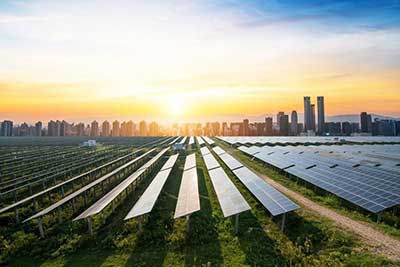Date: 25/02/2023
Relevance: GS-3: Science and Technology- developments and their applications and effects in everyday life.
Key Phrases: Renewable Energy, Decarbonization, Paris Agreement, Energy Transition, Net-Zero, Hydrogen-Based Storage, Lithium-Ion Batteries, Pump Storage Plants.
Context:
- Achieving the goal of having 500 GW of non-fossil fuel power
generation capacity by 2030 may seem realistic, but it could be difficult to
reach without improving the storage capabilities.
- This can be achieved not only through the use of batteries but also through the development of pump storage plants.
India’s Push towards Decarbonisation:
- India has shown consistent climate leadership and a strong determination to transition towards cleaner energy.
- During the COP26 summit in Glasgow, India unveiled the
"Gift of Five Elixirs," or Panchamrit, which consists of five elements.
These elements include four targets to be achieved by 2030, such as:-
- Reaching a non-fossil energy capacity of 500 GW.
- Fulfilling 50% of energy needs through renewable energy.
- Reducing the total projected carbon emissions by one billion tonnes until 2030.
- Decreasing the carbon intensity of its economy by less than 45% by 2030.
- The fifth target announced at COP26 is India’s commitment to net-zero by 2070.
- However India's decarbonization efforts require sufficient storage
facilities to move forward. This is crucial for two reasons.
- Firstly, storage will address the intermittency issue that arises from sudden changes in weather conditions that affect renewable energy generation.
- Secondly, coal-based generation cannot be phased out until stored energy is available to provide electricity during non-solar hours.
Current Scenario:
- Currently, India is not experiencing any major challenges as it possesses over 200 GW of coal-based capacity and can regulate the output of these stations as needed.
- The Central Electricity Regulatory Commission (CERC) recognizes 55%
as the technical minimum, meaning a 1,000 MW plant can run at 550 MW.
- Efforts are on right now to ascertain whether the technical minimum can be further brought down to 40 percent.
- When India's renewable capacity increases, assuming that they
"must run" so that solar and wind energy is not wasted, coal-based capacity
may need to go below the technical minimum, which is not feasible.
- In such a situation, some of the coal-based units would generate at the technical minimum and the extra renewable energy would be used to charge the batteries.
- This stored energy could then be used to supply electricity during non-solar hours, especially if coal-based generating units were to be gradually phased out to become net zero by 2070.
The Storage Options:
- There are three options currently available which are as follows:
- Hydrogen-based storage.
- Lithium-ion batteries.
- Pump storage plants.
- Hydrogen storage is suitable for long-term storage across seasons, for example, to provide energy during situations such as when coal mining goes down (during monsoon) or low hydro generation due to depleted reservoir levels.
- Batteries are ideal for day-to-day storage and discharge. Although the cost of batteries has decreased by around 80% in the past decade, the levelised cost of a battery is still high, at approximately Rs 8 to Rs 10 per unit.
- Pump Storage Plants: India has a total capacity of about 4.7 GW
(out of a worldwide capacity of 169 GW, China alone accounting for about 32
GW) but only 3.3 GW is functional.
- A survey by the Central Electricity Authority estimated that there is a potential for about 100 GW of pump storage capacity in India. The actual potential could turn out to be much less.
Limitations:
- Pump storage plants have not expanded significantly in India due to several factors, such as high investment costs, long gestation periods, non-remunerative pricing models, and a lack of adequate sites with the required topography for pump storage plant operation.
- India’s expertise in pump storage plants is questionable as the Tehri pump storage project, which started construction in 2011 and was supposed to be finished in four and a half years, has not been commissioned yet.
- The financial stability of distribution companies (discoms) will
pose another challenge. Private sector developers will need credible payment
security mechanisms before investing in additional solar and wind capacity.
- Furthermore, difficulties with land acquisition and securing the right of way for laying down transmission lines will also continue to hinder progress.
Conclusion:
- Unless there is a significant reduction in battery costs in the coming years, the lack of storage capacity may impede India's efforts to achieve net-zero emissions by 2070.
- The high cost of batteries not only poses a challenge to phasing out coal-based generation but also affects the introduction of electric vehicles (EVs), as batteries account for 30-40% of the total cost of EVs.
- India's target of achieving 500 GW of non-fossil generating capacity by 2030 may prove to be difficult to achieve due to the insufficient storage capacity, which needs to be addressed not only through batteries but also pump storage plants.
Source: The Indian Express
Mains Question:
Q. India's target of achieving 500 GW of non-fossil generating capacity by 2030 may prove difficult to achieve due to insufficient storage capacity. Discuss (150 words).







